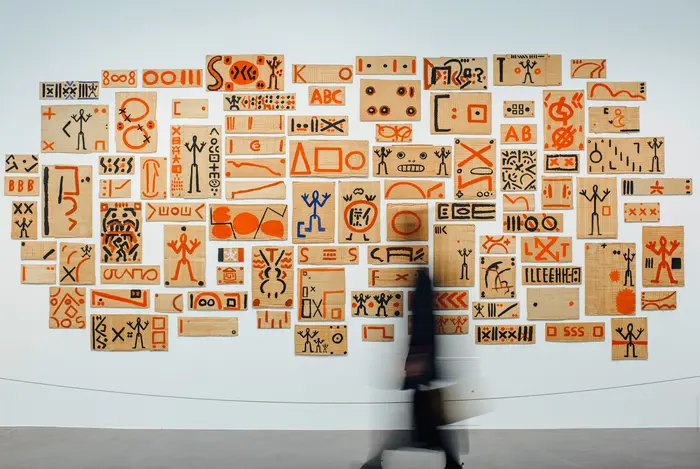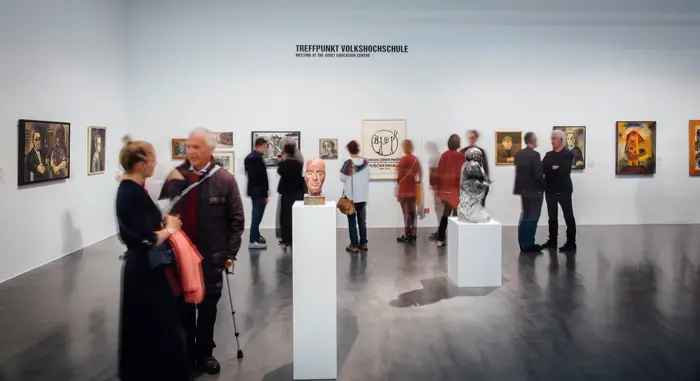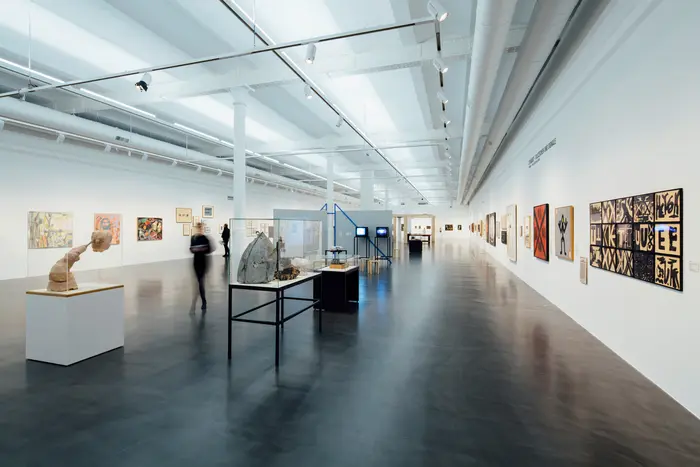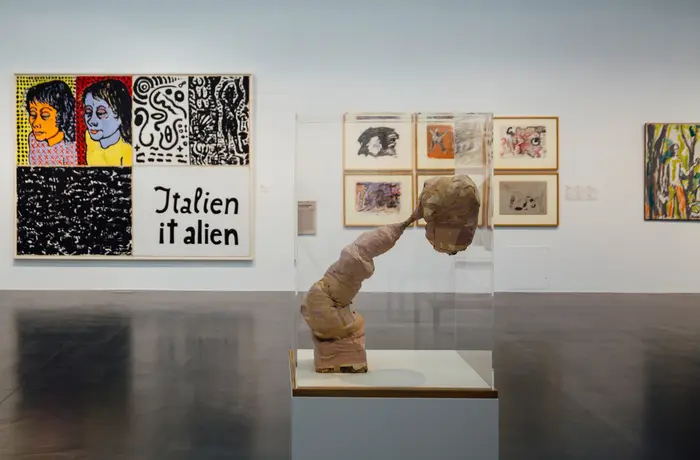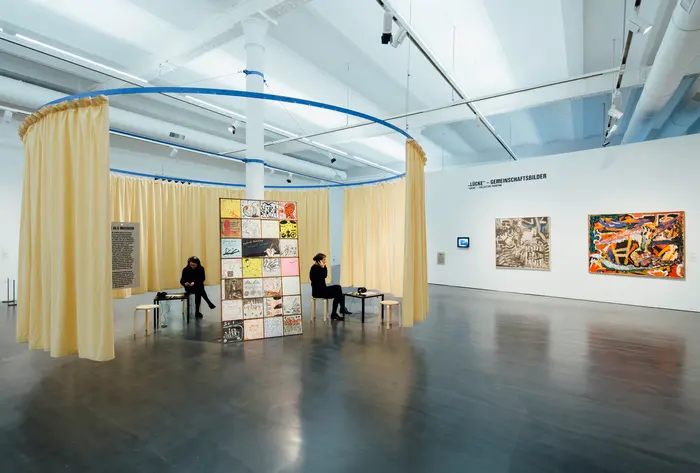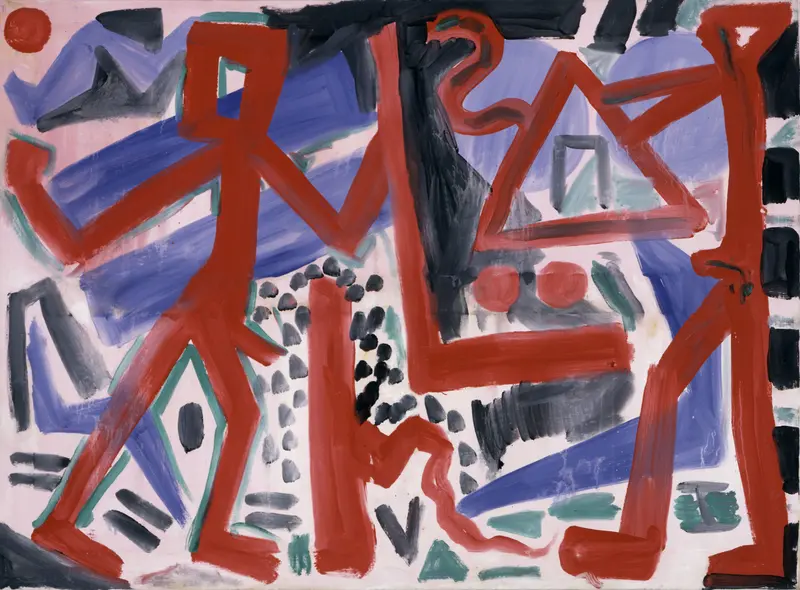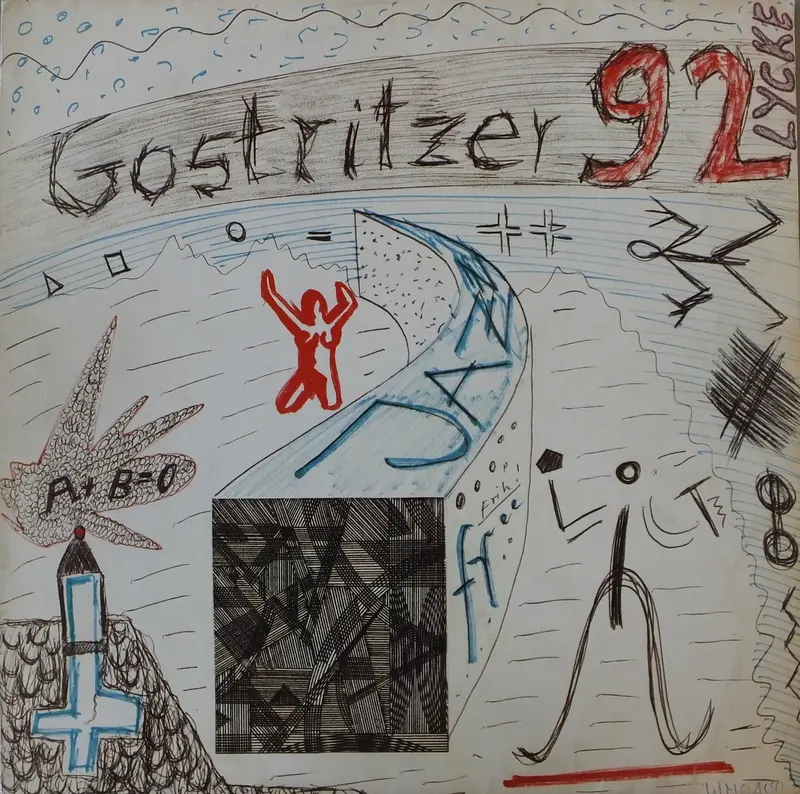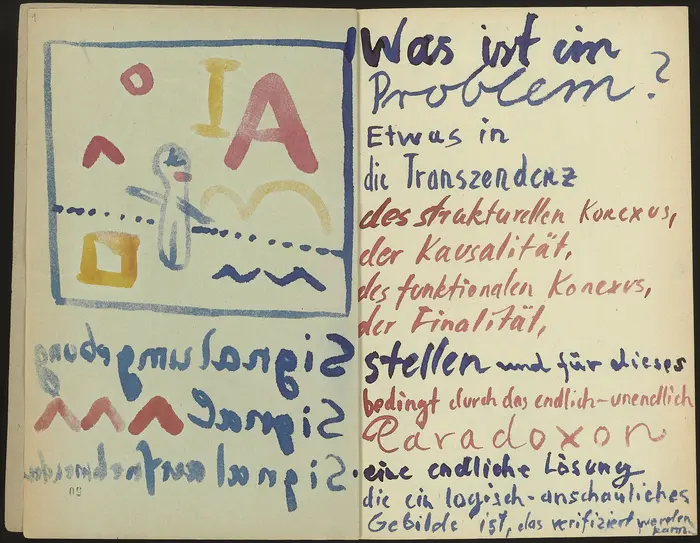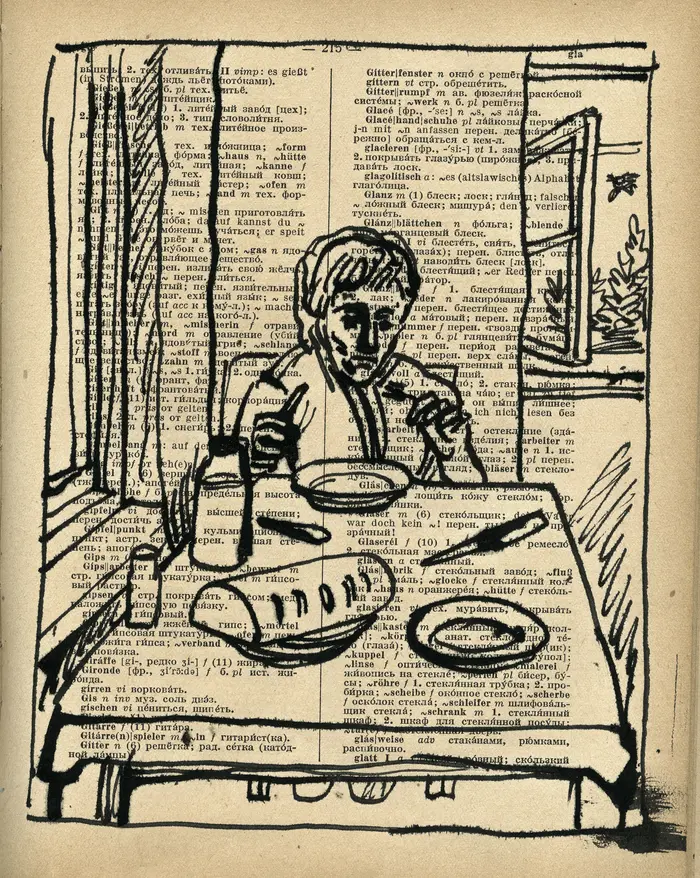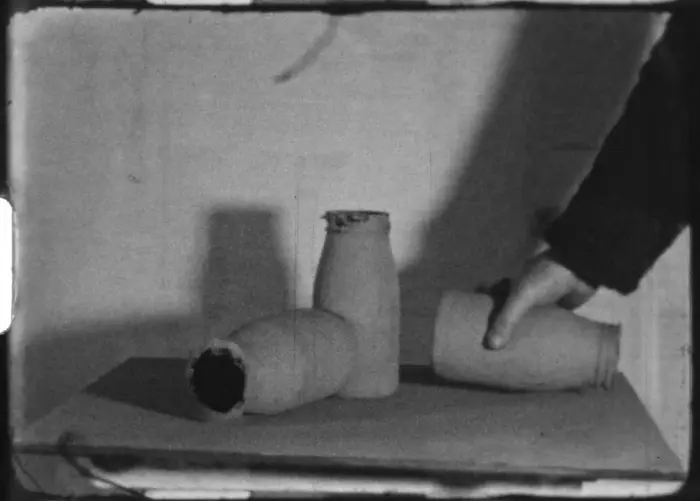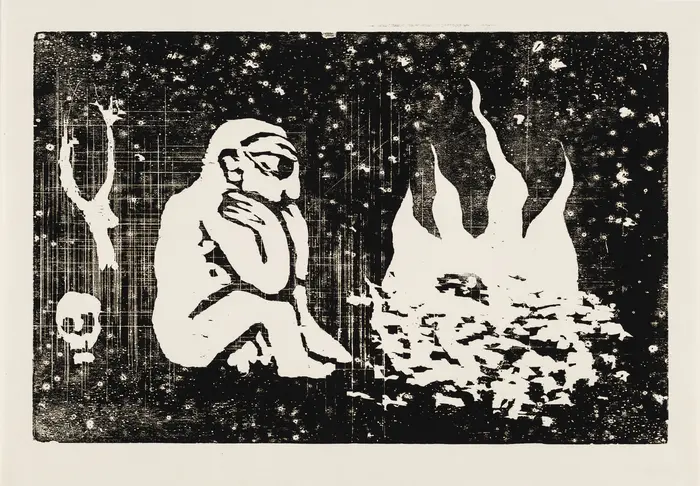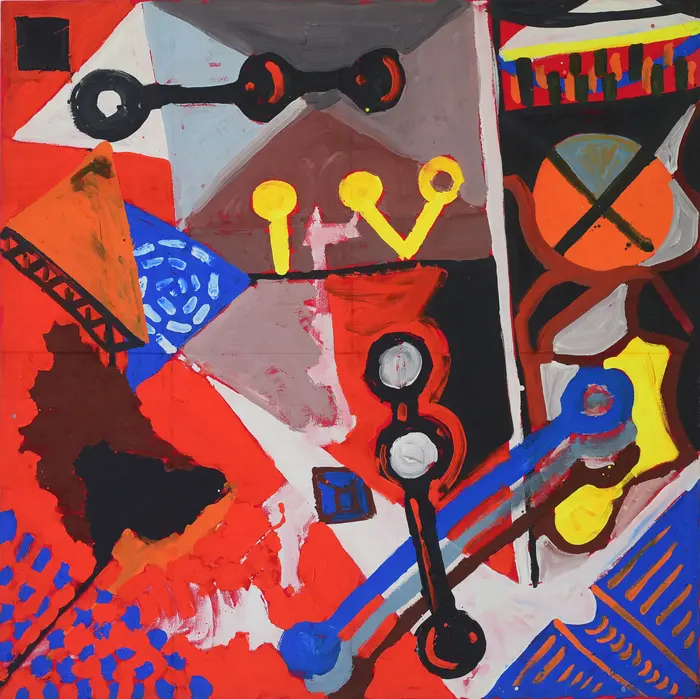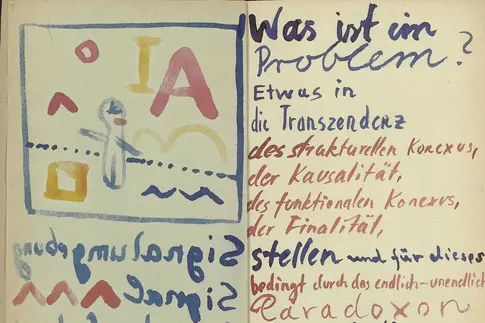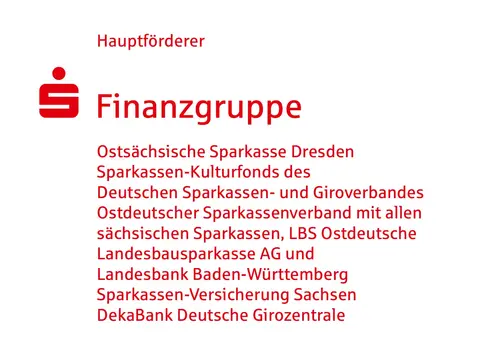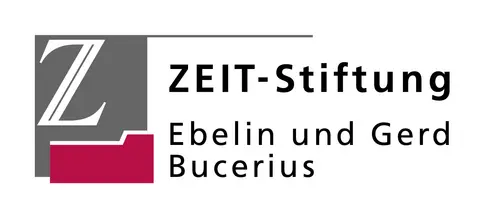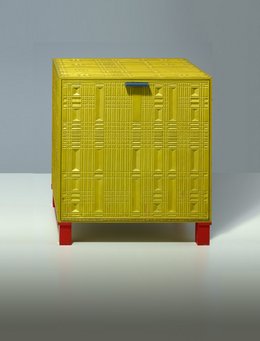[Translate to English:] Er besetzte den „Untergrund“
He occupied the “underground” art scene and generated a body of works that was both prolific and versatile, as a painter and illustrator, sculptor and printmaker, Super 8 filmmaker, musician and author. In his life and his artistic practices, he combined analytical and pictorial thinking. He fused ideas from philosophy, natural science, information theory and technology with old and new strategies of image making, as well as awareness of social and artistic issues, to create a multimedia concept of “Visuelles Denken” [visual thinking] – thinking in pictures.



